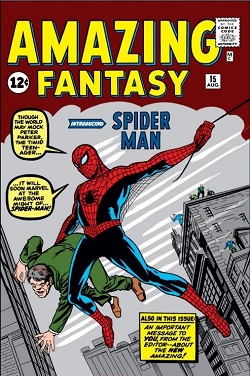At a recent business meeting of the Kansas City Writers Meetup Group,
the topic of conversation was critique groups. Every week, the meetup’s
organizer gets four or five requests from writers who want to join critique
groups. As the facilitator of one such group, I have had to inform several writers we're full.
And yet the opportunity to start new groups has never been greater. The KCWMG provides a ready forum for connecting with other writers and announcing meetings. If you want to join a critiquing group and are tired of waiting for openings, there's an easy alternative: start your own.
While every group operates differently, here are a few suggestions which have worked for the group I facilitate, the Monday Night Writers:
1. Be open to different genres. Some critiquing groups focus on a particular genre, such as
science fiction or children’s stories. While such a focus can keep
everyone on the same page, the Monday Night Writers Group benefits from being
as diverse as possible. Our writers have submitted screenplays, high
fantasy, Young Adult, thriller, flash fiction, and gay romance.
This diversity helps us focus on two
things: the qualities common to all stories and broadening our audience.
And, really, don’t you want your
work to reach the widest possible audience?
2. Create a supportive atmosphere. Guides for offering and receiving feedback can be found
everywhere, but the bottom line is this: Be honest but
respectful If you are critiquing a story, tell the writer how it
reads to you. Never make absolute statements (“This story is bad.”);
instead, frame your comments as suggestions coming from a reader who might pick
up the author’s book (“I think you can get to the meat of the scene
quicker.”).
And writers: practice the art of
distancing yourself from your story. Just because someone criticized it
does not mean you are a bad person.
3. Be willing to incorporate non-critiquing activities and
events into your group. By
all means, stay true to your purpose (to critique each others’ work), but be
receptive to other writing-related events. Members of the MNWG have held joint
book readings, participated in events such as Author Extravaganza, and attended
book launch parties.
Our group also holds a monthly
meeting called P&L (sardonically, "Plans and Lies"), in which we
share our goals for the upcoming month and report our progress of the previous
month.
Accountability and community are
essential qualities in sustaining any group.
4. Share responsibility. Just because you're the facilitator doesn't mean you have to
do it all. Let others contribute skills they are particularly good
at. One member of our group recruited new members. Another is a
whiz at setting up events and networking. If you feel yourself getting
overwhelmed (as I did recently), ask for help in even mundane tasks, such as
responding to requests from potential members.
5. Most importantly—have fun! This is sometimes harder than it seems. As
facilitator, you have to be responsible for keeping the group on focus and
(occasionally) making decisions. But let conversations drift where they
want to go, let people be people, and don’t forget to laugh. If you’re
not having a good time, why would others?
The above merely scratches the
surface of how a critiquing group can work. If you approach starting a
group with firm goals in mind, a willingness to be open, and a sense of
commitment, you can create what you seek: a nurturing, supportive team to help
you realize your dreams as a writer.
Because, after all, you’ll be
helping them realize theirs.
If you like this article, you may
also like:








